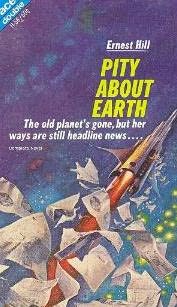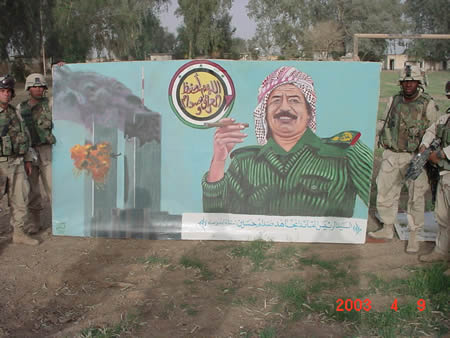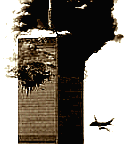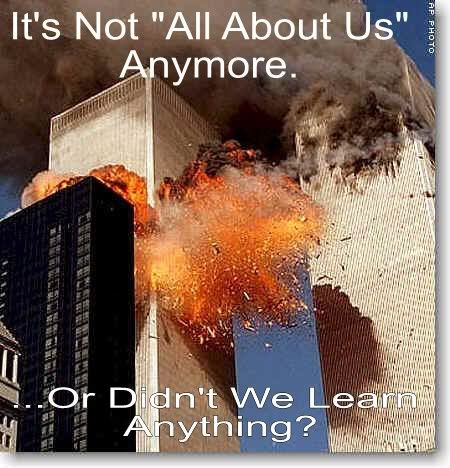We had planned to go through Mr. Obama’s first autobiography and try to puzzle out just exactly what he did as an organizer. Which is a daunting task, since the Anointed One is not the most concise of writers, despite having majored in English along with Political Science at Columbia.
So we were relieved and delighted to see that the great Byron York had already undertaken that onerous task at National Review:

A man moves furniture at the Altgeld Gardens housing project Thursday, Feb. 14, 2008, on Chicago’s South Side.
What Did Obama Do As A Community Organizer?
And is it really a qualification to be president?
September 8, 2008
By Byron York
… I counted myself among those who didn’t have a good idea of what a community organizer does. So I came here to learn more about Obama’s time in the job, from 1985 to 1988. What did he do? What did he accomplish? And what in his experience here stands as a qualification to be president of the United States?
Perhaps the simplest way to describe community organizing is to say it is the practice of identifying a specific aggrieved population, say unemployed steelworkers, or itinerant fruit-pickers, or residents of a particularly bad neighborhood, and agitating them until they become so upset about their condition that they take collective action to put pressure on local, state, or federal officials to fix the problem, often by giving the affected group money. Organizers like to call that “direct action.”
Community organizing is most identified with the left-wing Chicago activist Saul Alinsky (1909-72), who pretty much defined the profession. In his classic book, Rules for Radicals, Alinsky wrote that a successful organizer should be “an abrasive agent to rub raw the resentments of the people of the community; to fan latent hostilities of many of the people to the point of overt expressions.” Once such hostilities were “whipped up to a fighting pitch,” Alinsky continued, the organizer steered his group toward confrontation, in the form of picketing, demonstrating, and general hell-raising. At first, the organizer tackled small stuff, like demanding the repair of streetlights in a city park; later, when the group gained confidence, the organizer could take on bigger targets. But at all times, the organizer’s goal was not to lead his people anywhere, but to encourage them to take action on their own behalf.
Alinsky started in the 1930s with workers in the Chicago stockyards. Many years later, when Obama arrived here, he came from a different perspective.
“Barack had been very inspired by the civil-rights movement,” Jerry Kellman, the organizer who hired Obama, told me recently. “I felt that he wanted to work in the civil-rights movement, but he was ten years too late, and this was the closest he could find to it at the time.” Obama, in his memoir, put it more simply when he said he went to Chicago to “organize black folks.” …
Kellman, a New Yorker who had gotten into organizing in the 1960s, was trying to help laid-off factory workers on the far South Side of Chicago. He led a group, the Calumet Community Religious Conference, that had been created by several local Catholic churches…
Lloyd and another leader, Loretta Augustine-Herron, insisted that Kellman hire a black organizer for a new spinoff from CCRC to be called the Developing Communities Project, which would focus solely on the Chicago part of the area.
So Kellman set out to find a black organizer. He ran an ad in some trade publications, and Obama responded…
But Kellman had to sell Obama to the leaders. “Jerry introduces Barack, and Barack is so young, it’s like, ‘Oh my God,’” Loretta Augustine-Herron remembered. Obama was obviously smart, and he wanted to be an organizer, but he was, in fact, quite young (24) and he didn’t actually know much about the job…
The long-term goal was to retrain workers in order to restore manufacturing jobs in the area; Kellman took Obama by the rusted-out, closed-down Wisconsin Steel plant for a firsthand look. But the whole thing was a bit of a pipe dream, as the leaders soon discovered…
“Well, they had no transferable skills. I remember interviewing one man who ran a steel-straightening machine. It straightened steel bars or something. I said, well, what did you do? And he told me he pushed a button, and the rods came in, and he pushed a button and it straightened them, and he pushed a button and it sent them somewhere else. That’s all he did. And he made big bucks doing it.”
That, of course, was one of the reasons the steel mill closed…
Trying to construct a wide-ranging alliance of churches, Obama succeeded with Love and a few other ministers, but he was hampered by the fact that he didn’t go to church himself…
[B]efore long Obama, drawn to the preaching of Rev. Jeremiah Wright, joined Trinity United Church of Christ on 95th Street…
[I]if you ask Obama’s fellow organizers what his most significant accomplishments were, they point to two ventures: the expansion of a city summer-job program for South Side teenagers and the removal of asbestos from one of the area’s oldest housing projects. Those, they say, were his biggest victories…
A staple priority of organizers like Obama was the summer-jobs program. In the 1980s the jobs were administered by the Mayor’s Office of Employment and Training, or MET, but the nearest MET office to Altgeld was a long way away — beyond 95th Street — and located in what some felt was enemy territory…
Obama then choreographed a drive to demand a new MET office. (The point, remember, was not for him to make the demands but for the leaders to do it for themselves.) They set up a meeting with MET officials, and then Obama drilled the leaders on what they should say…
In a climactic meeting at Our Lady of the Gardens — Obama had, once again, carefully rehearsed the leaders on what they should say — MET officials agreed to open the new office. Obama had an accomplishment to point to…
The other Obama accomplishment most people mention is the asbestos cleanup at Altgeld. One day someone — it’s not clear who — noticed that some rather specialized work seemed to be going on at the management office in the center of the complex. “A young lady came to us and said they’ve got white suits on and they’re doing something in the office,” Yvonne Lloyd told me. “We asked them what they were doing and they said, ‘We’re renovating.’ That didn’t sound right. Why would they be wearing all this gear if they were just renovating?” It turned out the workers were removing asbestos from the building.
In Obama’s telling, the problem was discovered when a young woman noticed a small-print notice in the classified section of a newspaper, soliciting bids for asbestos cleanup at Altgeld. However it began, it didn’t take the residents long to guess that if asbestos was in the office, it might be in their apartments, too. That discovery led to Obama’s greatest hit as an organizer.
Obama recruited the young woman to pay a visit to the Chicago Housing Authority official who worked at the management office. Obama went too, hoping the official would deny that there was any asbestos in the apartments. “A cover-up would generate as much publicity as the asbestos, I had told myself,” Obama wrote in Dreams from My Father. “Publicity would make my job easier.” And sure enough, the CHA official denied it all.
Obama followed up — had the residents follow up, of course — with letters to top CHA officials. Finally, the group sent a message to the agency’s executive director, warning they would show up at his office to demand action. They got in touch with local TV stations, and everyone came to cover the asbestos showdown.
As it turned out, there was no showdown. CHA officials accommodated the protesters, promising to begin testing the Altgeld apartments for asbestos that very day. They also promised to attend a meeting at Our Lady of the Gardens to listen to everyone’s concerns. A few weeks later, the director of CHA himself came to the church’s gymnasium, where Obama’s group was prepared to present a demand for timely repairs. Perhaps 300 people came, along with the TV crews. Things veered toward fiasco when the young woman Obama had chosen to question the CHA director wouldn’t give up the microphone so the director could answer. A semi-comic tug-of-war ensued, with the director finally bolting the meeting, followed by an increasingly angry crowd.
It was a fiasco, and racial conspiracy theories quickly spread among the residents. “The whole thing was put together by Vrdolyak,” Obama quotes one man saying. “You saw that white man egging the folks on. They just trying to make Harold look bad.” Obama was deflated; at the very least, the big show was a setback to his effort. It was precisely the sort of scene he had wanted to avoid…
The organizers ended up winning anyway, although the cleanup wasn’t finished until years later. But something had changed for Obama during the asbestos fight, and he began to consider leaving Chicago for law school…
These are just brief excerpts from Mr. York’s excellent piece.
(By the way, if you click on the image at the top to enlarge it, you will be able to see a satellite dish on the stoop of the house a few doors down.)


 Apparently the media wants to get even for the Swift-Boaters successful torpedoing of John Kerry in 2004 because they are by the dozens every day promulgating lies about the career and life of Governor Sarah Palin. I recently posted a piece on the lies, exaggerations and misbegotten assumptions of a Baltimore Sun
Apparently the media wants to get even for the Swift-Boaters successful torpedoing of John Kerry in 2004 because they are by the dozens every day promulgating lies about the career and life of Governor Sarah Palin. I recently posted a piece on the lies, exaggerations and misbegotten assumptions of a Baltimore Sun 




























































 It’s hard to believe that it’s been seven years since that awful day when we all sat glued to the TV screen, watching the Twin Towers collapse into the streets of Manhattan.
It’s hard to believe that it’s been seven years since that awful day when we all sat glued to the TV screen, watching the Twin Towers collapse into the streets of Manhattan.


